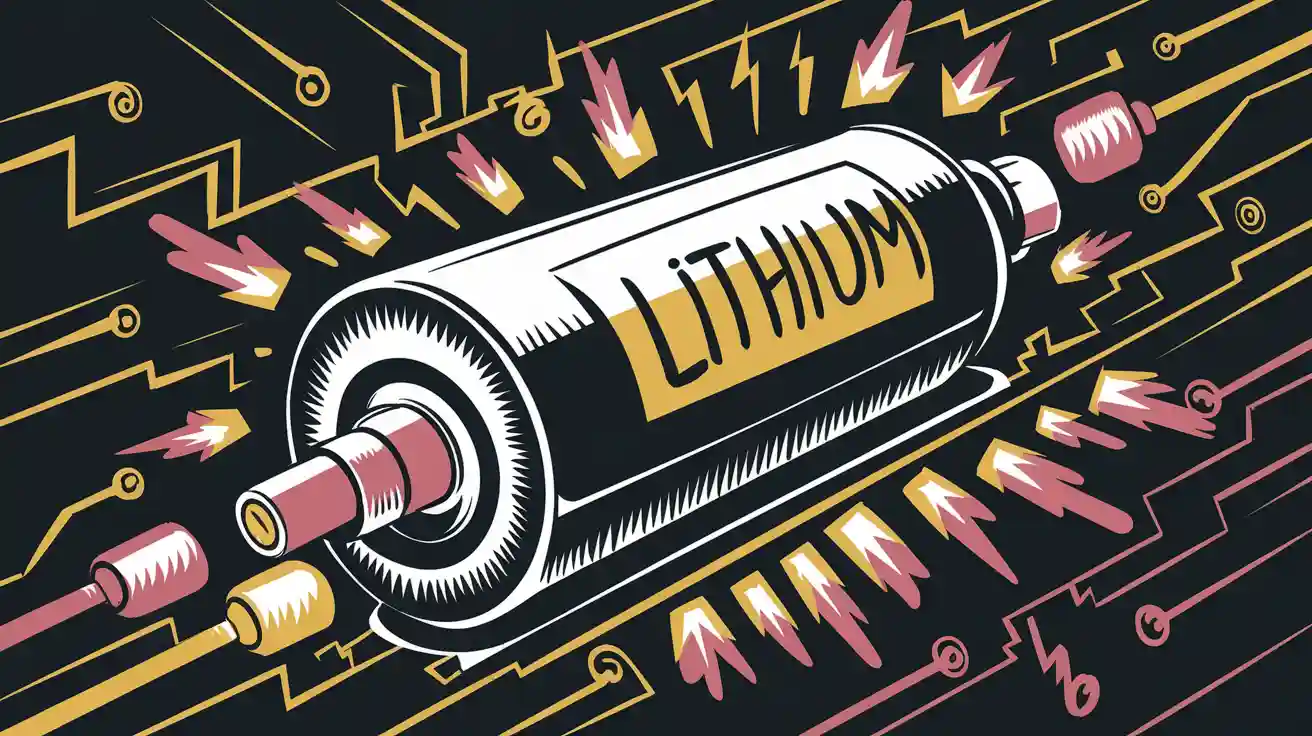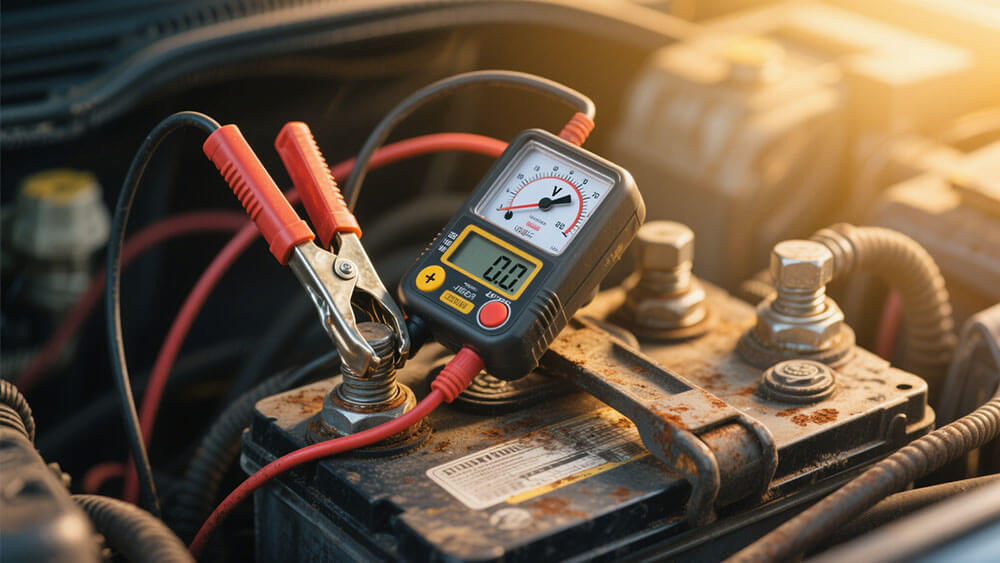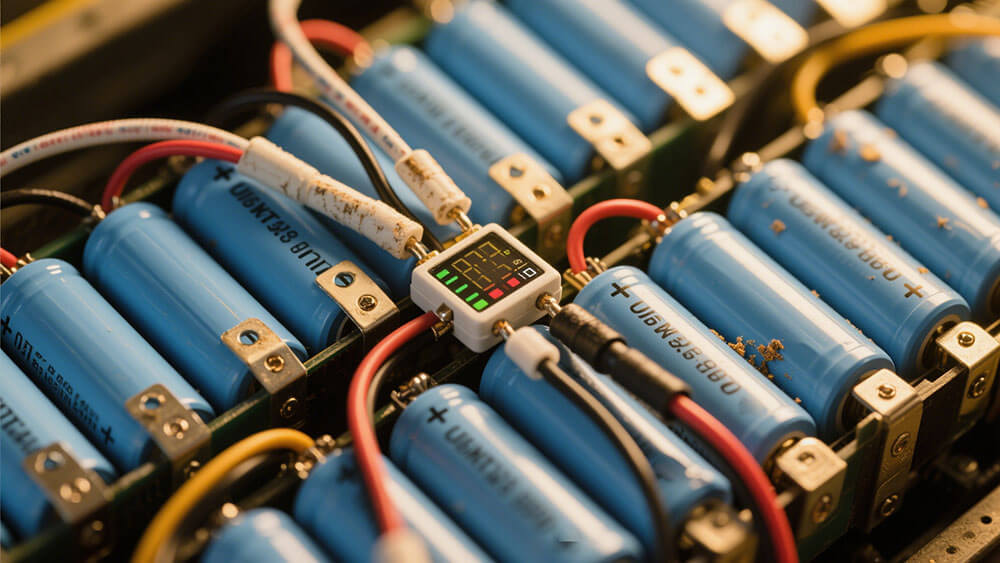
Understanding voltage vs amperage in lithium batteries is crucial for optimizing their performance and ensuring safety. Voltage determines the energy potential, while amperage indicates the current flow. Together, they influence power output and efficiency. Misjudging these parameters can lead to overheating or reduced lifespan, making informed selection vital for applications like robotics and industrial systems.
Tip: Consult experts to match voltage vs amperage in lithium batteries to your specific needs. Explore customized solutions here.
Key Takeaways
Voltage shows how much energy a lithium battery can give. Make sure the battery voltage fits your device to prevent problems.
Amperage tells how fast energy flows from the battery. Pick a battery with enough amperage to safely power your device.
Keeping voltage and amperage balanced is very important. Check these to improve performance and make the battery last longer.
Part 1: Definitions and Key Differences

1.1 What is Voltage in Lithium Batteries?
Voltage in lithium batteries refers to the electrical potential difference between the positive and negative terminals. It acts as the driving force that pushes electrons through a circuit, enabling the battery to deliver energy to connected devices. In simpler terms, voltage determines how much “push” the battery provides to the current.
The voltage of a lithium battery depends on its chemistry and design. For instance:
The nominal voltage of a lithium-ion battery is typically 3.60 volts per cell, though some manufacturers may label it as 3.70 volts for marketing purposes.
Charging increases the voltage, while discharging reduces it.
Factors like internal resistance and temperature can also influence voltage behavior.
Voltage plays a critical role in determining the compatibility of a lithium battery with specific devices. For example, a mismatch in voltage can lead to inefficient performance or even damage to the connected equipment. Understanding this parameter ensures you select the right battery for your application, whether it’s for robotics, medical devices, or industrial systems.
Note: Voltage stabilization in lithium batteries can take up to 24 hours after charging or discharging. This is essential for accurate capacity estimation and performance analysis.
1.2 What is Amperage in Lithium Batteries?
Amperage, often referred to as current, measures the flow of electric charge through a circuit. In lithium batteries, it indicates the rate at which energy is delivered to a device. Higher amperage means more electrons are flowing, which translates to faster energy delivery.
Amperage is typically expressed in amps (A) and is influenced by factors such as the battery’s internal resistance and the load connected to it. For example:
A battery with a higher amperage rating can support devices with greater power demands.
The charging and discharging processes rely heavily on amperage to regulate energy flow.
Accurate definitions of amperage are crucial for optimizing lithium battery performance. Studies show that:
Proper amperage management enhances the charging and discharging processes, which are vital for reliable capacity estimation.
Advanced methods, including statistical and machine learning techniques, analyze voltage and current curves to predict battery performance more effectively.
Amperage also impacts the safety of lithium batteries. Excessive current flow can lead to overheating, reduced lifespan, or even thermal runaway. By understanding amperage, you can ensure safe and efficient operation, especially in high-demand applications like industrial machinery or security systems.
1.3 Voltage vs Amperage in Lithium Batteries: Key Differences
While voltage and amperage are closely related, they serve distinct roles in lithium batteries. Voltage determines the energy potential, while amperage governs the rate of energy flow. Understanding the difference between volts and amps is essential for selecting the right battery for your needs.
Parameter | Voltage (Volts) | Amperage (Amps) |
|---|---|---|
Definition | Electrical potential | Rate of current flow |
Unit of Measurement | Volts (V) | Amps (A) |
Role in Battery Performance | Determines energy capacity | Regulates energy delivery |
Impact on Devices | Compatibility with load | Speed of energy transfer |
Safety Considerations | Overvoltage risks | Overcurrent risks |
The relationship between voltage and current is governed by Ohm’s Law, which states that voltage equals current multiplied by resistance (V = I × R). This interplay directly affects the power output of a lithium battery, as power is the product of voltage and current (P = V × I).
Tip: When comparing volts vs amps in lithium batteries, consider both parameters together to achieve optimal performance and safety. For custom battery solutions tailored to your specific requirements, consult experts at Large Power.
Part 2: Roles and Relationships in Lithium Batteries

2.1 The Role of Voltage in Lithium Battery Systems
Voltage plays a pivotal role in determining the energy potential of lithium batteries. It acts as the driving force that moves electrons through a circuit, enabling the battery to power devices effectively. The voltage of a lithium battery is influenced by its chemistry and design. For instance, lithium-ion batteries typically have a nominal voltage of 3.6 volts per cell, which can vary slightly depending on the manufacturer.
Higher voltage does not always mean more power. Power output depends on both voltage and current. However, voltage directly impacts device compatibility. A mismatch in voltage can lead to inefficient performance or even damage to the connected equipment. For example, industrial applications often require batteries with specific voltage ratings to ensure seamless operation.
Voltage also affects safety. High voltage levels can pose risks, such as severe shocks, even at low current levels. Understanding the role of voltage helps you select batteries that meet your application’s requirements while maintaining safety standards.
Tip: For custom lithium battery solutions tailored to your voltage needs, consult experts at Large Power.
2.2 The Role of Amperage in Lithium Battery Systems
Amperage, or current, determines the rate at which energy flows from a lithium battery to a device. It is measured in amps and directly influences the battery’s ability to meet power demands. A higher amperage rating allows the battery to support devices with greater energy requirements, such as robotics or medical equipment.
The performance of lithium batteries is also affected by the solid electrolyte interphase (SEI). This layer manages lithium-ion flow to the electrodes, ensuring stable operation during charging and discharging. Proper amperage management prevents issues like overheating, filament growth, or reduced lifespan. For instance, in high-demand applications like security systems, maintaining the correct amperage ensures both efficiency and safety.
Amperage also plays a crucial role in runtime. Devices with higher energy consumption require batteries capable of delivering consistent current over extended periods. By understanding amperage, you can optimize battery performance for practical applications of volts and amps.
2.3 The Relationship Between Voltage, Amperage, and Power
The relationship between voltage and current is fundamental to understanding lithium battery performance. According to Ohm’s Law, voltage equals current multiplied by resistance (V = I × R). This relationship directly impacts power output, which is calculated as the product of voltage and current (P = V × I). For example, a battery with 12 volts and 2 amps delivers 24 watts of power.
Voltage affects device operation, while current influences energy transfer and runtime. Together, they determine the battery’s overall efficiency and suitability for specific applications. Advanced statistical models, such as deep learning algorithms, analyze time-current-voltage datasets to predict battery behavior. These models help optimize the relationship between voltage and amperage, ensuring safe and efficient operation.
Understanding the interplay between voltage, amperage, and power is essential for selecting the right battery. Whether you’re powering consumer electronics or industrial systems, balancing these parameters ensures optimal performance and longevity.
Note: For more insights into sustainable lithium battery solutions, visit sustainability at Large Power.
Part 3: Practical Implications for Performance and Selection

3.1 Difference Between Voltage and Amp Hours in Battery Capacity
Understanding the difference between voltage and amp hours is essential for evaluating lithium battery capacity. Voltage represents the electric potential difference, while amp hours measure the total charge a battery can deliver over time. Together, they determine the energy capacity and runtime of a battery.
For example, watt hours (Wh) provide a more comprehensive view of energy consumption by combining voltage and current. A battery with 12 volts and 10 amp hours has a capacity of 120 watt hours (12V × 10Ah = 120Wh). In contrast, amp hours alone only indicate how long a device can operate without accounting for voltage variations. This distinction is critical when comparing batteries with similar amp hour ratings but different voltages.
Aspect | Voltage | Amp Hours |
|---|---|---|
Definition | Electric potential difference | Total charge delivered over time |
Measurement Units | Volts (V) | Ampere-hours (Ah) |
Role in Capacity | Determines energy availability | Indicates runtime |
Impact on Energy Usage | Affects watt-hour calculation | Simplifies runtime estimation |
Practical Example | Higher voltage reduces current flow, improving efficiency | Higher amp hours extend runtime |
Tip: When selecting a lithium battery, consider the relationship between voltage and amp hours to ensure compatibility with your device’s energy requirements.
3.2 Risks of High Voltage and Amperage in Lithium Batteries
High voltage and amperage levels in lithium batteries can pose significant safety risks. Overvoltage can lead to overheating, while excessive current flow may cause short circuits or thermal runaway. These issues often arise due to manufacturing variations, environmental factors, or improper battery management.
Manufacturing Variations: Differences in cell activation levels, thickness, and porosity can create imbalances in voltage and capacity.
Environmental Factors: High temperatures and poor ventilation exacerbate voltage and capacity inequalities, increasing the risk of overcharging.
Battery Management: Without balanced control, one cell may overcharge while others remain undercharged, a phenomenon known as the “barrel effect.”
To mitigate these risks, monitoring systems like shunt resistors or Hall sensors can track current flow and prevent overcurrent situations. Proper installation and adherence to safety guidelines also play a crucial role in minimizing hazards.
Note: For applications requiring high voltage or amperage, consult experts to design custom lithium battery solutions that prioritize safety and efficiency.
3.3 Choosing the Right Voltage and Amperage for Your Application
Selecting the appropriate voltage and amperage for your application ensures optimal performance and longevity. Start by evaluating your device’s power requirements, including its voltage range and current demand. For instance, industrial systems often require medium voltage (12V to 36V) batteries to balance power efficiency and safety.
Voltage Considerations: Match the battery’s voltage to your device’s specifications to avoid compatibility issues.
Amperage Considerations: Ensure the battery can deliver sufficient amps to meet your device’s energy demands without overheating.
Application-Specific Needs:
Medical Devices: Require stable voltage and low discharge rates for consistent performance.
Robotics: Demand high amperage for dynamic movements and extended runtimes.
Security Systems: Benefit from batteries with balanced voltage and current for reliable operation.
Emerging technologies, such as AI-powered consumer electronics, further influence battery selection criteria.
Tip: For tailored recommendations, explore custom battery solutions designed for your specific industry needs here.
3.4 Balancing Voltage and Amperage for Optimal Lithium Battery Performance
Balancing voltage and amperage is crucial for achieving optimal performance in lithium battery systems. This balance directly impacts power output, efficiency, and lifespan. Key performance metrics to monitor include:
Metric | Description |
|---|---|
Nominal Voltage | Determines operational efficiency and compatibility with devices. |
Charge/Discharge Rate (C) | Affects performance in high-rate applications like robotics and industrial systems. |
Depth of Discharge (DOD) | Maintaining ~50% DOD extends battery lifespan. |
State of Charge (SOC) | Prevents overcharging and ensures consistent performance. |
State of Health (SOH) | Indicates when a battery requires replacement. |
Temperature Management | Ensures safe operation within the optimal temperature range. |
For example, maintaining a balanced depth of discharge and state of charge can significantly extend a battery’s lifespan. Similarly, monitoring the charge/discharge rate helps optimize performance in high-demand applications.
Note: Advanced battery management systems (BMS) can automate these processes, ensuring safe and efficient operation.
Balancing these parameters not only enhances performance but also reduces safety risks. Whether you’re powering consumer electronics or industrial equipment, understanding the practical applications of volts and amps ensures reliable and efficient operation.
Understanding the differences between voltage and amperage in lithium batteries is essential for optimizing performance and ensuring safety. Voltage determines the energy potential, while amperage controls the rate of energy flow. Together, they influence power output, efficiency, and lifespan.
Accurately managing these parameters ensures safe operation and extends battery lifespan. For instance, proper voltage regulation during charging prevents overheating, while maintaining balanced amperage supports efficient energy delivery. These principles are critical for applications in robotics, medical devices, and industrial systems.
Tip: Consult experts at Large Power for tailored lithium battery solutions that meet your specific needs.
FAQ
1. What is the difference between lithium-ion and LiFePO4 batteries?
Feature | ||
|---|---|---|
Nominal Voltage | 3.6–3.7V | 3.2V |
Energy Density | 160–270 Wh/kg | 100–180 Wh/kg |
Cycle Life | 1,000–2,000 cycles | 2,000–5,000 cycles |
Applications | Consumer electronics, robotics, medical devices | Industrial systems, infrastructure, renewable energy storage |
Tip: Choose LiFePO4 for longer cycle life and safety. Opt for lithium-ion for higher energy density in compact devices.
2. How do I select the right lithium battery for robotics applications?
To select a battery for robotics, consider:
Voltage: Match the robot’s voltage requirements.
Amperage: Ensure sufficient current for peak performance.
Capacity: Choose higher amp hours for extended runtime.
Note: Consult Large Power for custom battery solutions tailored to robotics.
3. Why is battery management important for security systems?
Battery management systems ensure:
Voltage Regulation: Prevents overcharging or undercharging.
Current Monitoring: Avoids overheating and short circuits.
Safety: Reduces risks of thermal runaway in security systems.
Tip: Use advanced BMS for reliable and safe operation in critical applications.




